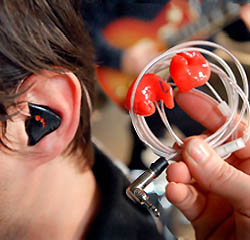
7) Side Fills And A Downstage Pair Of Wedges Aren’t Necessary. That is, for a band that’s entirely on personal monitors. However, having them allows two things to happen:
A) Front of house (or control room) talkback is more easily understood, not just by performers, hut also by stagehands and technicians to better assist during line and sound check.
B) It’s easier for onstage visitors, whether they’re hosts or MCs interacting with your talent or the occasional sit-in with a guest performer, who may not use personal monitors in that situation.
8) Talkback (Monitors Only) Inputs For Stage Communication. Extra inputs for vocal mics on stage that can only be heard in the monitor system allow private on-stage conversations that provide security and comfort. Ideally every musician has a mic dedicated to inter-communication.
9) Individual Reverbs. All singers benefit from having their own separate vocal reverb, dedicated to their own voice and not shared with other singers. Singers can also benefit from a classic dual micro pitch shift that is simply one cent up and down with a 5 or 10 ms delay.
Grouped drum or instrument reverbs use several aux buses, but dedicated vocal effects can be either direct- or insert-patched to economize on mix buses.
10) Digital Consoles. An analog desk for personal monitors is great as long as you either bring it with you or have enough time to patch all your comps, gates and effects and you get a full sound check.
But there’s no greater joy than recalling a monitor scene on a digital desk at a festival and having everything right back where it was at the previous show. A 16,000 Hz low-pass on all personal monitors outputs from a digital desk can reduce digital artifacts.
Mark Frink is an independent author, editor, consultant and engineer who has mixed monitors for numerous top artists.
